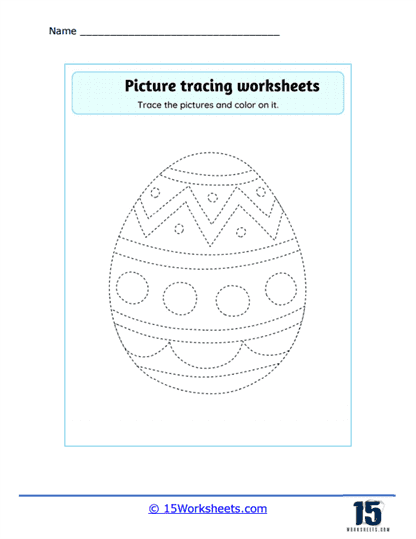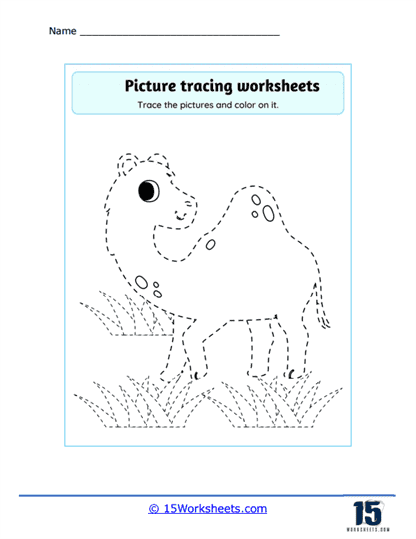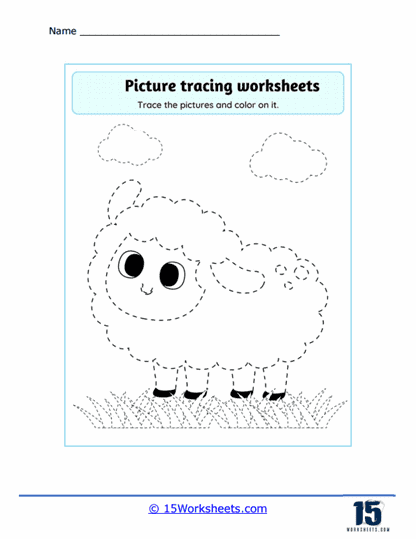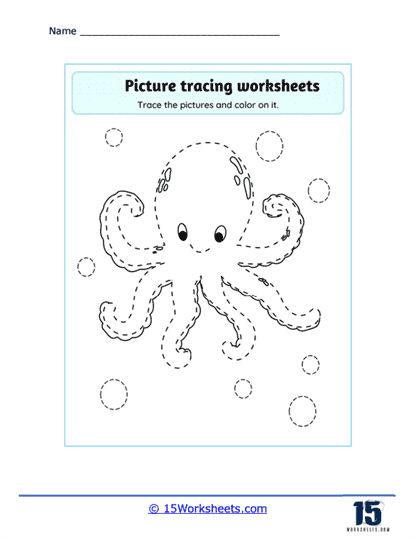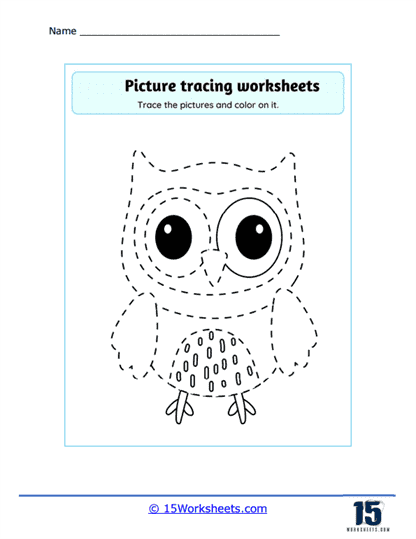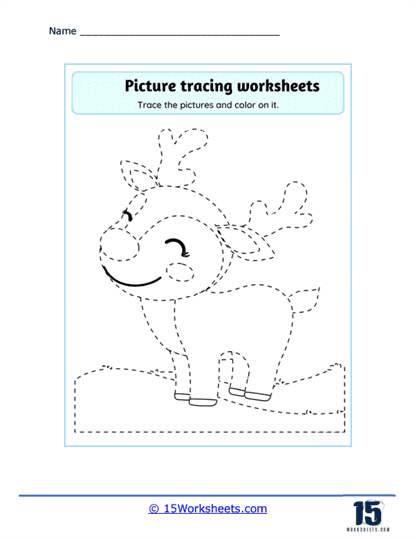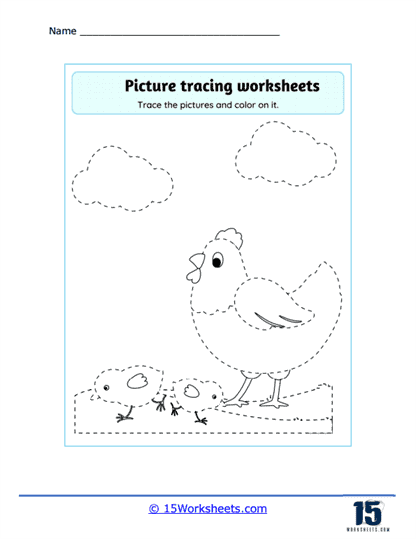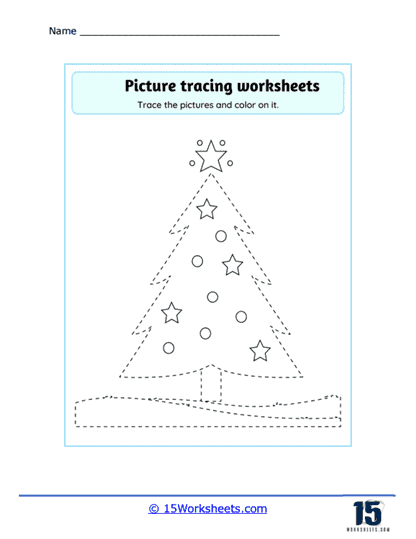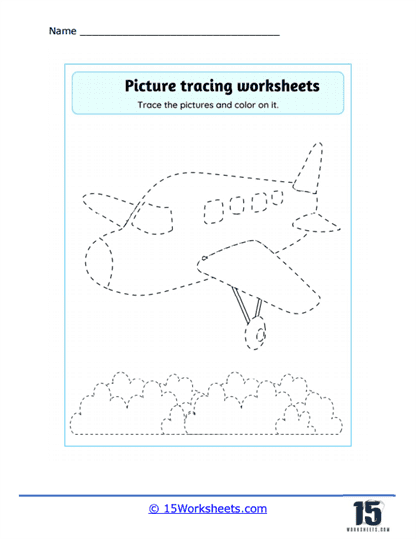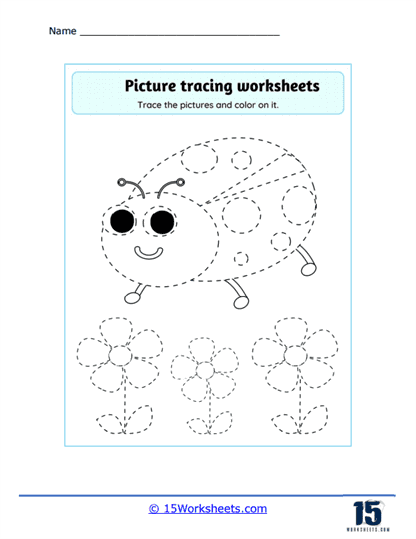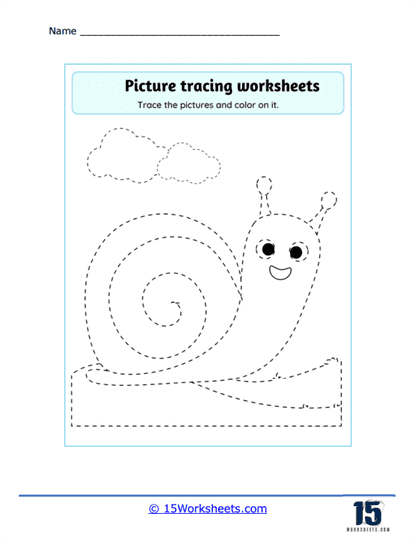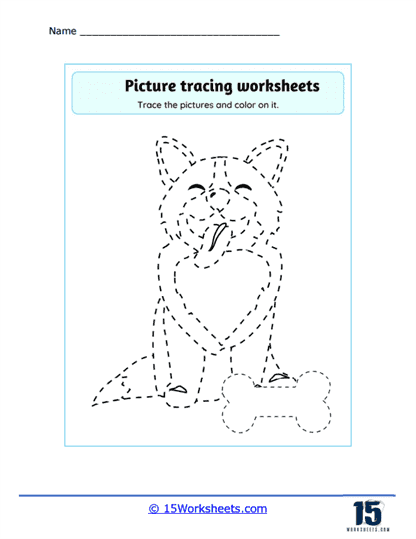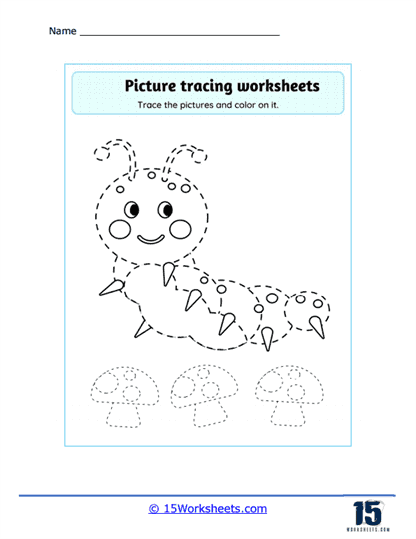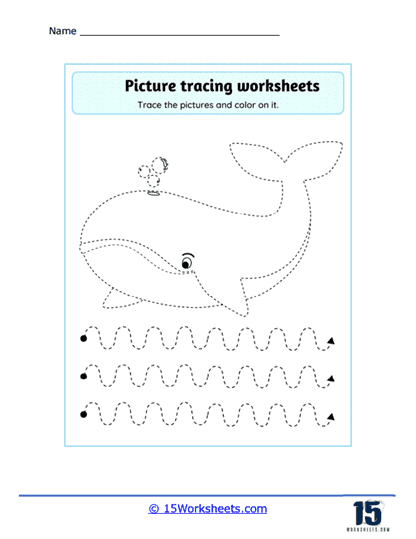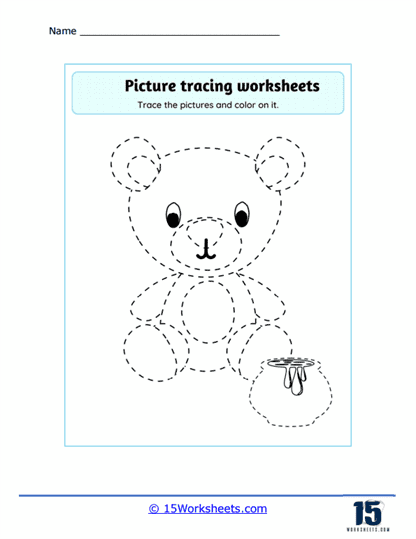Picture Tracing Worksheets
About These 15 Worksheets
Picture Tracing worksheets are educational resources designed to help children develop and practice their fine motor skills, hand-eye coordination, and pre-writing abilities. These worksheets include pre-drawn images, shapes, or patterns with faint lines that children can trace using a pencil, crayon, or other writing utensil.
Some common elements of Picture Tracing worksheets may include:
Tracing Simple Shapes – Worksheets may feature basic geometric shapes, such as circles, squares, triangles, and rectangles, for children to trace and familiarize themselves with.
Tracing Objects or Animals – Children can trace images of everyday objects, animals, or other familiar items to practice their fine motor skills and hand-eye coordination.
Letters and Numbers – Worksheets may include faint outlines of letters or numbers, helping children become familiar with their shapes and practice their handwriting skills.
Patterns – Worksheets can feature various patterns or designs, such as zigzags, loops, or waves, for children to trace and improve their pencil control.
Tracing Scenes or Landscapes – Some worksheets may include simple scenes or landscapes, allowing children to practice tracing more complex shapes while developing their creativity and imagination.
Connect the Dots – Worksheets might also incorporate dot-to-dot activities, where children connect numbered or lettered dots in sequence to create an image, reinforcing number and letter recognition.
Picture Tracing worksheets can be used in various settings, such as classrooms, therapy sessions, or at home, and can be adapted to suit different age groups and developmental levels. These worksheets help children develop essential fine motor skills, hand-eye coordination, and pre-writing abilities, which are crucial for success in writing, drawing, and other activities that require precise hand movements.
How Does This Skill Help Students?
Tracing images offers numerous educational benefits for children. One of the primary advantages is the development of fine motor skills, as tracing requires precise hand and finger movements. This prepares children for similar tasks such as writing and drawing, both vital for their academic journey. Additionally, tracing enhances hand-eye coordination. The process of observing an image while tracing it strengthens the connection between visual cues and hand movements.
Tracing also fosters spatial awareness, helping children to comprehend the spatial relationships between different components of an image. This understanding of shapes, distances, and sizes is a key aspect of early development. Along with this, the act of tracing cultivates focus and patience in children. It requires concentration and can gradually improve a child’s attention span while instilling values like patience and persistence.
In the context of artistic development, tracing serves as an effective primer for freehand drawing and other artistic pursuits. It familiarizes children with various lines, shapes, and forms, thereby nurturing their artistic appreciation. Moreover, tracing can be a confidence-building activity. The sense of achievement a child gets upon successfully completing a tracing, especially when they can recognize the traced image, boosts their self-confidence.
From a literacy standpoint, tracing acts as a pre-writing skill. It assists children in understanding the shapes of letters and numbers, laying a solid foundation for when they start learning to write. Lastly, tracing contributes to cognitive development. The cognitive exercise of recognizing an image, recalling it, and reproducing it on paper aids in memory enhancement, comprehension, and problem-solving skills.

